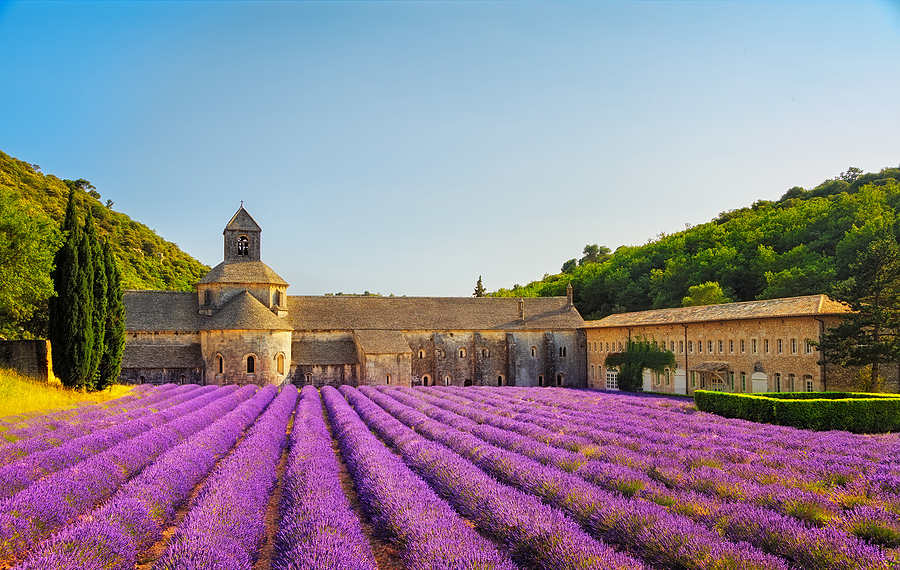A Scent to Savour

Who can resist the scent of lavender, synonymous with long, hot summer days and reputed to be a cure for insomnia, hastening sleep? Just one of several aromatic herbs to grow in the wild around the Mediterranean basin, this plant has long been cultivated and processed to extract its beneficial oils. Indeed, the lavender fields of Provence have become a holiday destination in themselves the serried ranks of intense violet-blue adorning many a postcard home.
The best time and places to see lavender
From the mountains of the Vercors and Drome (northern Provence) to the area around Mont Ventoux and the hilly Luberon, lavender fields stretch as far as the eye can see along many of the major and minor road routes. One of the best places to view this spectacle is the Plateau de Valensole (Haute-Alpes). If you want to catch this sight before the flower heads are cut, it’s essential to visit between mid-June and late July.
The Romans used lavender for its scent and it is believed that it was introduced to Provence during Medieval times, by which time its antiseptic, anti-bacterial properties were appreciated.
However, growing on a commercial scale really took off during the 19th century, when the perfumeries of Grasse discovered that its oils could enhance their products.
A quick guide to lavender
A distinction is made between ‘lavande fine’ and lavandin. The former (lavendula angustifolia) is a smaller plant grown on the higher slopes, producing a more intense oil. Allowed to bear the AOC appellation ‘Huile Essentielle de Haute-Provence’, products made from it command a higher price. The latter refers to a larger plant (lavandula intermedia), a cross between angustifolia and other strains of lavender. This produces a greater quantity of less intense oil, making it a cheaper alternative.
A range of uses
Well-suited to the dry, sunny slopes of inland Provence, today the humble lavender plant is still harvested for its essential oils, extracted at distilleries for cosmetic use (in soaps, perfumes, bath products and aromatherapy). Cut stalks are tied, dried and sold to the floristry and holiday souvenir trades and its tiny, oval heads are widely used in the local food industry; almost anything can be flavoured with lavender – from bread, chocolate and ice-cream to lemonade. Bon appétit!
If you’re thinking of travelling to Provence, here’s our latest Travel Guide to the region.
Where better to stay whilst exploring Provence than at a private villa with your own pool. Take a look at our portfolio here

